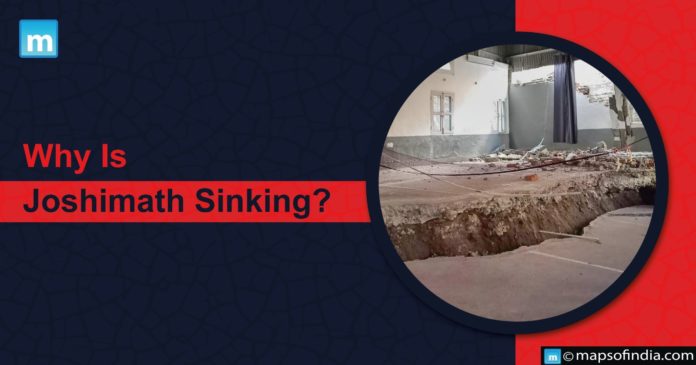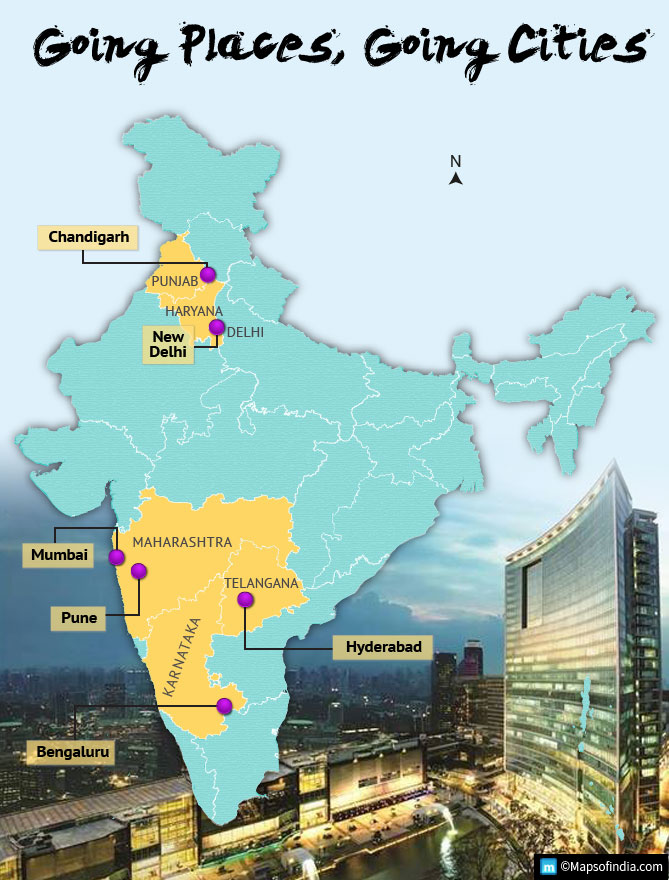Joshimath, also called Jyotirmath, is a town and municipal body in Chamoli District in Uttarakhand, India. It is an entryway to various Himalayan mountain mountaineering adventures, hiking paths, and pilgrimage centres such as Badrinath, and is situated at an altitude of 6 1875 m. It is the location of one of Adi Shankara’s four main pthas. The Uttarakhand flooding has badly impacted the area and its consequences since February 7, 2021. The town is verified to be sinking supposedly because of its placement along a flowing ridge Structures surrounding the town developed fractures, forcing residents to flee.
Inhabitants of the sacred city of Joshimath in Uttarakhand have been alarmed after discovering cracks in the town’s structures and streets, which they have characterised as the town “gradually sinking”. In reaction to the concerned residents’ objections, the Uttarakhand government banned construction activities on January 5 due to soil subsidence that led 561 residences in Joshimath to form cracks. Let us investigate the science of the Joshimath crisis.
Unregulated Construction
More than 10 years ago, architectural experts warned about the risk of ground sinking in the region. This quick and broad stratum dewatering. The reality that the city is sinking is hardly surprising, given that no corrective efforts have been taken. According to residents, several new multi-story constructions have suddenly appeared within and around Joshimath city over the past ten years. One of those buildings reportedly toppled due to subsidence. Despite being well informed of the geological hazards in the region, hydroelectric schemes such as the Vishnugad HE Project have been sanctioned between Joshimath and Tapovan.
According to a study conducted by the Uttarakhand State Disaster Management Authority (USDMA) in August 2022, Joshimath’s downhill instability concerns have become more severe as a consequence of unplanned buildings that did not take load-carrying capacity into account. Several new structures might be built in the landslide-prone region by constructing retaining walls. As a result, the load on the unstable slope has risen.
Drainage
Experts and the USDMA have identified increasing ground leakage of water from the surface as a possible cause of the sinking. Anthropogenic surface-level operations have impeded natural water drainage channels, forcing water to seek other drainage paths.
In addition, there is no drainage or wastewater disposal infrastructure in Joshimath. The seepage reduces the shear capacity of the overworked soil. This is evident in Sunil Village in Joshimath, where water pipes have twisted out of shape owing to subsidence.
Geography
A statement from the 1976 Mishra Panel highlighted the first occurrence of sinking at Joshimath, located in a landslide-prone zone. The town is situated on the middle slopes of a hillside, bounded to the east and west by the Dhaknala and Karmanasa streams and the north and south by the Alaknanda and Dhauliganga rivers.
Mishra panel’s findings
Mahesh Chandra Mishra was appointed to investigate the origin of the collapses and drowning of Joshimath town. It proposed limitations on heavy building activity, cultivation on slopes, tree removal, pucca drainage to reduce rainfall seepage, a good drainage system, and concrete slabs on river sides to avoid erosion in its report dated May 7, 1976.
According to the Indian Express, on recurring landslides, the report said, “Probable causes can be hillwash, the natural angle of repose, location of cultivable area and habitation on old landslide debris intermixed with glacial material, weathering and undercutting by streams. It may also be due to the formation of a big fissure plane and movement along this plane.”
Similarly, the location of the cultivated area on slopes will give rise to landslides. Weathering will also have adverse effects because of the wear and tear of bare rocks, undercutting by river currents of Alaknanda and Dhauliganga is also playing their part in bringing landslides… Hill washing and percolation of water occur due to rains and snow melting. The penetrating water in the rocks dislodges because of the washing-off of materials,” it said.





